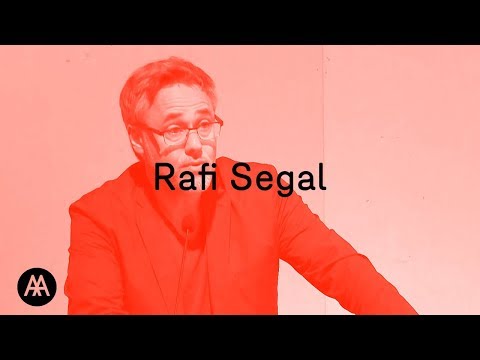
31st May 2018
Evening Lecture
Rafi Segal in conversation with Ana Araujo
Ever an intellectual and independent thinker, the Czech modernist architect Alfred Neumann (1900–1968) believed in the artistic role of architecture as the poetic and utilitarian shaping of a “humanised” space. Yet while he achieved professional recognition internationally, Neumann was never fully accepted by the architectural establishment in his adopted country, Israel, and remained a perpetual outsider. Departing from the orthogonal and functionalist expressions of the International Style of modern architecture popular during his lifetime, Neumann instead conceived of buildings as spatial assemblies of repeated, stacked, and interconnected polyhedral units scaled proportionally to the dimensions of the human body. In the context of mid-twentieth-century architecture, Neumann’s design method reconciled two distinct approaches to composing built space: he bridged the long-standing practice of conceptualising buildings as confined, standalone objects with a newer mode of treating architecture as patterns. His body of work constitutes an alternative strand of modernism that reflects both rational-technocratic and individual-artistic approaches to design. Neumann’s story is that of the architect’s struggle for creative freedom within a society that demanded conformity. It raises perennial questions about the role of the architect and probes conflicts between function and form, rationalism and art, which lay at the centre of modern architectural discourse and continue to vex the discipline to this day.
Rafi Segal is an architect and Associate Professor of Architecture and Urbanism at The Massachusetts Institute of Technology (MIT). His work involves design and research on both the architectural and urban scale, currently focusing on how emerging notions of sharing and collectivity can impact the design of buildings and the shaping of cities. Segal has exhibited his work widely, most notably at Storefront for Art and Architecture; KunstWerk, Berlin; Rotterdam Architecture Biennale, Venice Biennale of Architecture; MOMA in New York; and at the Hong Kong/Shenzhen Urbanism Biennale. He holds a PhD from Princeton University and two degrees from Technion – Israel Institute of Technology – M.Sc and B.Arch. His most recent book Space Packed: The Architecture of Alfred Neumann was published by Park Books in 2017.
Dr Ana Araujo is Unit Master at Intermediate 2. She was designer and curator of the exhibition ‘Lina & Gio: the last humanists’, which looked at the relationship between these two designers and their common, humanizing agenda. She is also a practitioner working to challenge the banality and complacency present in today’s architectural culture.